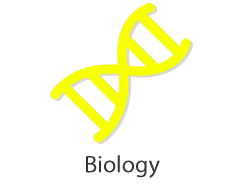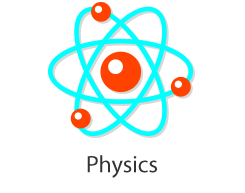USED ONE OF OUR LESSON PLANS?
Fill in our survey for a chance to win a Science North YETI mug! We will draw winners quarterly throughout the school year.
Fill in our survey for a chance to win a Science North YETI mug! We will draw winners quarterly throughout the school year.
Students will use their reading, problem solving, and decorating skills as they piece together this personalized visual story about germs and their immune system.

In this lesson, students will learn about the habitats used by ants while learning basic computational thinking. They will learn how to create their own assets using Scratch JR so that they can create fun dioramas that come to life using code!

This screen less coding exercise will have students play a drawing game, where they use limited “energy” to draw houses with specific criteria using shapes.

Using the game, “Two Truths and a Lie”, students will learn the difference between things that are real, true or fact and things that might be made up, lies, or fiction. They will learn that not everything they see online is true, and they will be given tools to spot misleading information.


Students will move through 3 activities with group discussion in between. The first is having students identify what materials different objects and structures are made of, with a discussion on why they might be made with those materials. The second activity will have them explore the properties of the materials of different objects and structures around them, discussing why those properties are helpful to that object/structure’s function. Finally, students will explore the function of the materials used in buildings through the lens of The Three Little Pigs,” as well as using a scientific experimentation process to explore other building materials and their properties.

Students will learn about polar bears and their current needs for survival. They will also learn about how their environment is becoming endangered through climate change. We will talk about ways we help and harm the environment and then students will be challenged to use scratch junior to help the polar bear get his food. They will design the ice area that their polar bear lives on and then give him directions to get his food.

An introductory, unplugged coding activity that allows Grade 1 students to explore directionality, sequencing, critical thinking and problem solving. This will allow students to explore beginning coding concepts and use cooperative games to experiment with coding.

This is lesson one of two where students will learn that materials are things that are used to make objects, and fasteners are used to connect objects together. They will be using floor tiles to create a grid. Desks may need to be pushed to the side to create more space for the class. Students will have to write a code to their partner to guide them to where the materials are.

This is lesson two of two where students will continue to explore how certain materials can be used to safely build a structure (tree house). The goal of this activity is to code the beebot so that it moves on the grid to collect materials needed to build a tree house.

After participating in our school program, “Seasons: Will it Rain or Will it Snow?”, students can experiment with how changing the angle of the light changes the amount of surface area that is exposed to the light.

Students will have the opportunity to make their own lava lamp using different liquids and solids.

Students will search for tracks on freshly fallen snow to see if they can identify the animals that are still active during the winter months. They will also look at the tracks to see if the animals have special adaptations that allow them to travel on top of snow.

In this lesson, students will work together to find the correct path through the maze. They will become the programmable object, while uncovering exactly what their directions are. It will provide them with a new perspective of coding.

This science coding lesson will give students the opportunity to demonstrate their understanding of the four seasons cycle, while exploring the Ozobot and it’s capabilities.

Almost all energy sources on Earth, and especially the ones humans draw upon to survive, can be traced back to the Sun. In this lesson students follow the path of sunlight through the ecosystem. Through the activity of giving light from one life form to the next we see how it makes life possible and gives us energy needed to live.

We explore how the Sun warms the air, soil and water. To look at heating of air we build a simple little greenhouse, for soil we place a rock inside the greenhouse, and for water we compare how a container of it warms up in the sun compared to shade. Needless to say that this is a lesson for a sunny day only!

Pre Activity This is a Pre Activity for the Seasons School Program at Science North. Students learn how the Earth’s rotation causes day and night.
Post Activity This is a Post Activity for the Seasons School Program at Science North. Students track the changes in the sun’s position in the sky throughout the seasons. Patterns in the amount of light/dark and what causes these are discussed.

Pre Activity
This is a Pre Activity for the Insects in Their Environment School Program at Science North. In “Design a Plant or Animal”, students use craft materials to design and build their own animal or plant while investigating the basic needs and characteristics of both plants and animals. The interdependence of plants and animals within specific habitats is also explored.
Post Activity
This is a Post Activity for the Insects in Their Environment School Program at Science North. In this lesson, students manipulate groupings of coloured items to develop an understanding of habitats and communities and the relationships among the plants and animals found within them. Various scenarios also highlight the effects of human activities on these different habitats.

Post Activity This is a Post Activity designed to go along with Fables of Fresh Air (Grade 1 – 3) school program. It reinforces the concepts established in that lesson by letting the students see how “stories” unfold in even just a small area of natural space. This lesson sets the activity, which can last several days to several months.

Post Activity This is a Post Activity for the What’s the Buzz School Program delivered by the Science en Route Outreach Team. Using the downloaded and printed pages provided, students make a weather wheel that depicts how honeybees live during the four seasons.


In this lesson, we will choose materials to create a shelter for a toy animal. We will explore which materials are ideal for the shelters and the materials that they are made of. Students will ensure that the toy animal does not touch the walls or roof inside of the shelter. When they are completed, we will test the shelters outside.

In this lesson, we will explore if plants can grow without sunlight. We will make predictions about the growth of the plants in the dark. We will also compare the observations made about the plants in the sunlight and the plants placed in the dark.